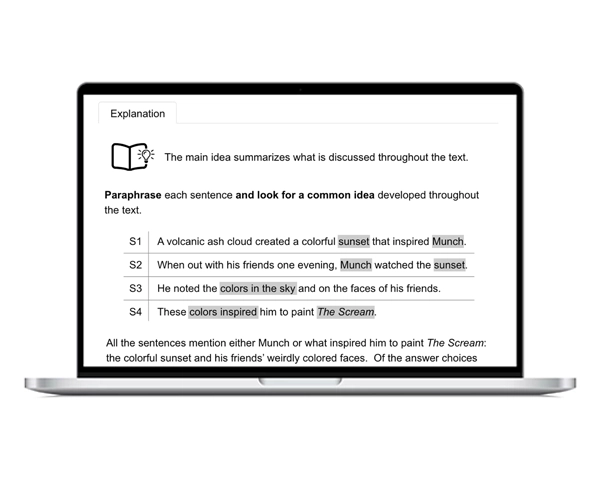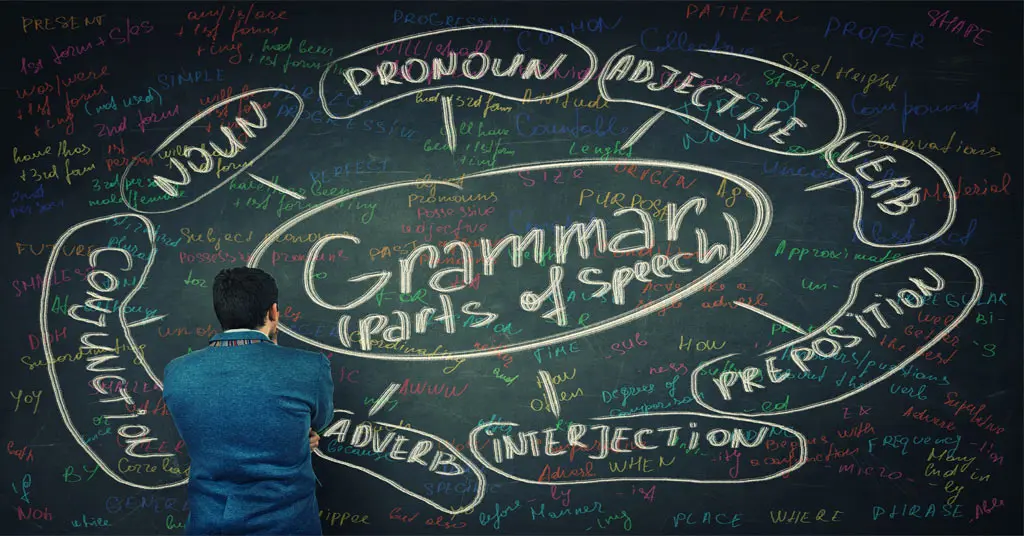Most students dread being tested on their math skills for the Digital SAT® test. What they don’t know is that math is the easiest section to prepare for and score well on. Just by memorizing the formulas, practicing consistently, and sidestepping a few typical mistakes, students can ace the math portion of the test. Here is a breakdown of the most common Digital SAT math mistakes and how to avoid them.
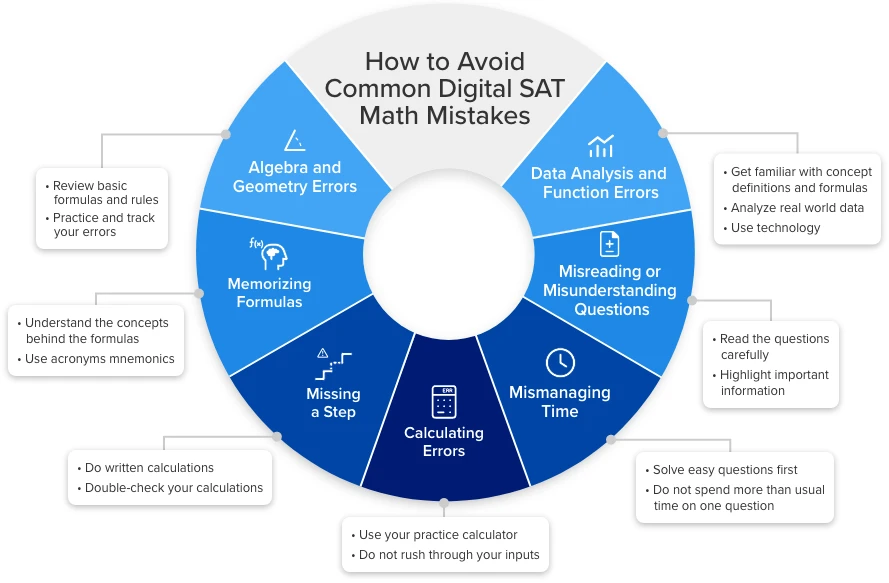
Study Slip-Ups
If you don’t study properly, miss important topics, or practice insufficiently, you may end up feeling unprepared for the test and struggling with certain questions and concepts. Here’s are a few frequent mistakes that you can make due to study slip-ups:
Algebra and Geometry errors
When solving algebra questions, students often fail to simplify expressions and understand the order of operations. In geometry questions, errors can occur due to misreading diagrams and using incorrect formulas.
Here’s how you can improve your algebra and geometry skills:
- Review the basics:
As most of the math questions are based on your high school curriculum, review old exams and textbooks, identify what you were struggling with in the past, and use Uworld’s practice test to prepare and track your performance. - Practice and track your errors:
Solve as many problems as you can. Identify your mistakes and work on improving them.
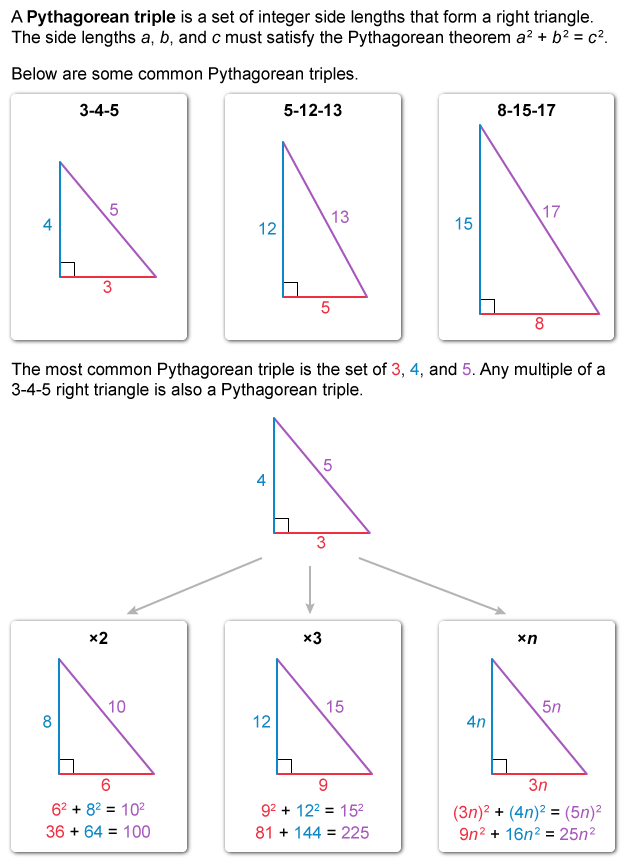

If you don’t understand how to solve an equation, try looking for clues in the answer choices, eliminating the obvious incorrect answers, or doing back calculations.
Data Analysis and Function errors
The common errors that are made while solving data analysis questions include misreading axis labels or scales, not identifying outliers, and using incorrect statistical methods. In function questions, students misunderstand function notations and transformations, confuse variables, and forget domain or range.
Here’s how you can improve your data analysis and function skills:
- Familiarize yourself with the concepts of Data Analysis and Functions
Learn about the concepts of mean, mode, range, deviation, and probability for data analysis. For functions, make sure you know everything about domain, range, intercepts, and slope.
| Concept | Definition | Formula | |
|---|---|---|---|
| Mean | The average of a data set. To find it, add all the numbers together and then divide the sum of the numbers by the quantity of numbers. | Data Set | 150, 200, 250 |
| Sum of Numbers | 150 + 200 + 250 = 600 | ||
| Calculate Mean | 600 / 3 | ||
| Mean | 200 | ||
| Range | The difference between the highest and lowest values in a set of numbers. | Data Set | 12, 50, 23, 8, 37 |
| Calculate Range | 50 – 8 | ||
| Range | 42 | ||
- Analyze real world data:
Looking at real world datasets will help you practice data analysis, and identify patterns and relationships. Choose any dataset of your interest and explore it by looking at different variables, such as the date, time, location, or quantity. Formulate questions and select appropriate analysis methods, such as mean, median, mode, range, standard deviation, or correlation to interpret the results. - Use technology:
Try using statistical software to analyze the data more efficiently. Work with graphing calculators to solve graph functions. Be sure to follow the digital SAT calculator policy as any violation may lead to the cancellation of scores.
If you are not good at statistics, try practicing the most commonly tested topics including algebra, functions, data analysis, geometry, and measurement.
Memorizing Formulas
While a reference sheet of formulas is provided for the math test, it is crucial to build an understanding of which formulas you need to solve specific question types because the Digital SAT formula sheet only provides basic information that can help solve math test questions. The formula sheet is not comprehensive nor does it provide indications of when to apply each formula to specific problem types.
Here’s how you can remember all the formulas:
- Understand the concepts behind the formulas:
Memorizing the Digital SAT math formulas is easier when you understand how they are derived and what they represent. Try making flashcards using index cards or digitally using UWorld’s flashcard feature. Put the formula on one side of the card and the underlying concept on the other side. Use these cards to quickly review concepts before taking more practice tests.
For example, the Distance Formula is often easier to understand for students who recognize it as an application of the Pythagorean Theorem. That is, the distance between two points on a graph can be found by drawing a right triangle, using the line segment between the points as the hypotenuse.
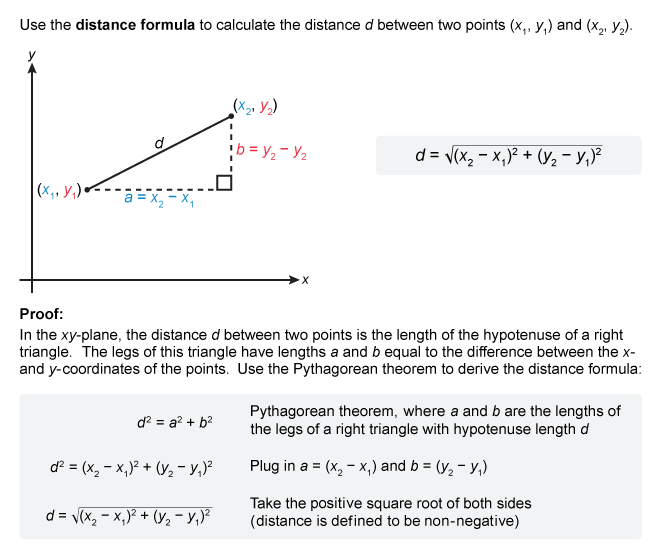
- Use acronyms or mnemonics:
Create acronyms or mnemonics to help you remember the formulas.
For example, the Digital SAT tests your understanding of the relationship between a right triangle’s side lengths and its angles, and the acronym SohCahToa is an easy way to remember those relationships.

| SOH | CAH | TOA |
| The Sine of an angle is equal to the length of its Opposite leg divided by the Hypotenuse | The Cosine of an angle is equal to the length of its Adjacent leg divided by the Hypotenuse. | The Tangent of an angle is equal to the length of its Opposite side divided by the length of its Adjacent side. |
In case you don’t understand the underlying concepts of formulas, try looking for quality Digital SAT Math resources online with up-to-date information, exam-like questions, and engaging features like videos, practice quizzes, and games to help you stay motivated and focused.
Test Day Errors
Even if you are well-prepared for the test, there is always a risk of making common errors on the test day. To minimize this risk, it is important to get plenty of rest the night before the test, and stay calm so you can focus while taking the test. Here are a few test day errors that can occur:
Misreading or misunderstanding questions
It happens when students are running out of time and rushing through their tests. Even though you need to pace yourself according to the allotted time, it is important to slow down while reading the questions so you don’t miss any details.
Here’s how you can avoid misreading or misunderstanding questions:
- Read the questions carefully:
Make sure you understand what the question is asking before attempting to solve it. After solving, quickly recheck if your solution makes sense according to the question. - For example, many questions testing your ability to analyze an equation will ask you to solve not simply for x, but for some expression using x (e.g., x + 1). On these questions, the value of x on its own will almost certainly be included as an answer choice, so be sure to verify that you’ve solved for the requested expression.
- Highlight the important information:
Mark important numbers, units, or key words as you read the passages or questions to form equations.
If you are not sure what the question is asking, go back and read it again. Break it down into smaller parts to simplify it.
Missing a step
While a calculator is permitted throughout the Digital SAT, not every question necessitates its use, especially with formula questions. Even if you feel confident in mental calculations, there’s a risk of unintentional errors.
To prevent overlooking a step, consider these strategies:
- Do written calculations:
Write down every single step while solving a question in order to avoid missing a step and making careless mistakes, such as forgetting to carry a digit or misplacing a decimal point. - Double-check your calculations:
It is not uncommon to make careless mistakes when calculating. Always double-check your solution to catch any errors in your steps.
Mismanaging time
On the Digital SAT Math test, each module will consist of 22 questions, lasting 35 minutes. It is critical to learn how to pace yourself in order to avoid running out of time.
Here’s how you can manage your time:
- Solve easy questions first:
It’s best to begin with the easy questions and gradually move on to the difficult ones. This can help you gain momentum and avoid getting stuck at tough questions. Students taking the Digital SAT test may also bookmark the questions they need to revisit. - Establish a consistent pace per question:
Aim to spend no more than 1 minute per question. This will give you around 5-10 minutes at the end to review your answers.
Calculator errors
Mis-typing and plugging in the wrong information can lead to incorrect answers and waste valuable time. Additionally, the Digital SAT has specific calculator restrictions for the Math section. Make sure you understand what types of calculators are allowed and not allowed.
Here’s how you can avoid errors while using a calculator:
- Use your practice calculator:
Opt for a calculator that you are comfortable with and have experience using. Familiarity with its functions can help you avoid errors that may stem from using an unfamiliar calculator. - Input numbers mindfully:
Exercise care when entering numbers and symbols. A simple mistake, such as entering the wrong sign, can significantly impact your calculations.
It’s time to start practicing. Remember, there is no alternative to practicing when it comes to improving math skills. Prepare with UWorld’s Digital SAT math practice test. Our detailed question explanations and performance tracking tools will help you get the desired score on the test. Read our Digital SAT math study guide to learn the tips and strategies for solving different types of math questions.
